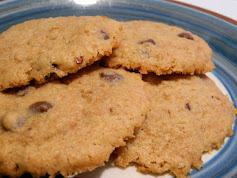Paper Birch (Betula papyrifera) is one of those rock star plants that support humans with food, beverage, medicine, material and firewood, not to mention aesthetic decoration. It is often mistaken for trembling aspen (Populus tremuloides) because they both have whitish bark with black markings on it. The paper birch has bark that flakes off which the aspen does not. The aspen tends to have more bluish/greyish bark and the birch is brightly white. They both have black markings around where branches attach. The aspen bark is coated in a powdery dust. The birch has some of that but nowhere near the amount that the aspen does. For more info on aspen and pictures, go to entry on trembling aspen.
https://foragingforestfables.blogspot.com/2021/01/trembling-aspen.html
Now in March we're just seeing the snow give way to muddy spring grounds. The sap has started to run. The sun is warm during the day and the nights are still freezing. Here at the farm we have had many birch fall prey to what I believe is the Bronze Birch Borer (Agrilus anxius). The name anxius means just that: anxious or troublesome. They attack trees that have been stressed by drought or unusually high temperatures, and as the borers eat their way through the tree the birch first develops stunted yellow growth and later complete die-back of upper limbs. A sign that it is the bronze birch borer that is the culprit are D-shaped holes in the bark- their exit holes.
Once the trees develop dead tops they do make me anxious, rotten limbs can fall off without warning. They call these trees "widow-makers" for this reason. We're trying to fell these trees safely before the sap rises too much. This way the wood (that can still be salvaged for firewood) will season faster. Birch makes the best fire wood. At this time we're also harvesting the outer bark to use for crafts such as basket making and decorations. The small bits of bark are put aside to use for fire starters. They are excellent, they make a bright hot flame that can set your kindling alight.
The inner bark, (the cambium), is another fantastic resource that this tree has. I shave off chunks of it and dry it slightly before roasting in oven. The last batch I roasted for 15 min at 350°F and then turned off the oven and left the bark in there for the night. The next morning they were nice and crumbly. This crumbly stuff I grind finely into a flour. The finer you grind it the easier it is to bake with. I add this flour to cookies and bread.
Close up inner bark/cambium (left), harvesting cambium (right)Chocolate chip/birch bark cookies
Ingredients
2 cups regular flour
1/4 cup birch bark flour
1 cup butter
1 cup brown sugar
1 teaspoon salt
2 teaspoons vanilla
2 eggs
1 cup chocolate chips
1/2 cup finely chopped dates
Directions
Whip egg and sugar
Mix all dry ingredients, then slowly mix in with egg mixture.
Add dates and chocolate at end and gently fold into the mixture.
Place dough balls on oven trays with parchment paper and bake for 10 min at 350°F. Let cool. Enjoy!
Below are some pictures of paper birch throughout the year to use for identification.




















No comments:
Post a Comment